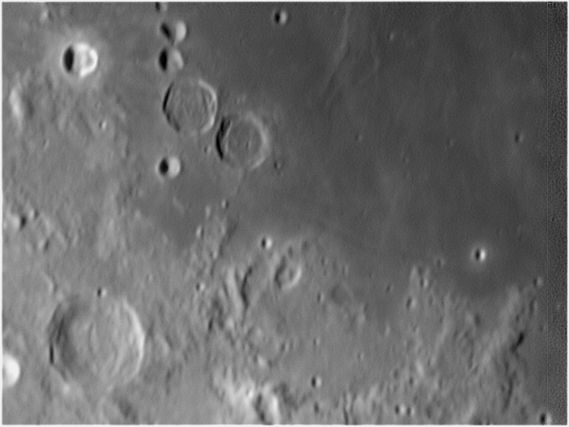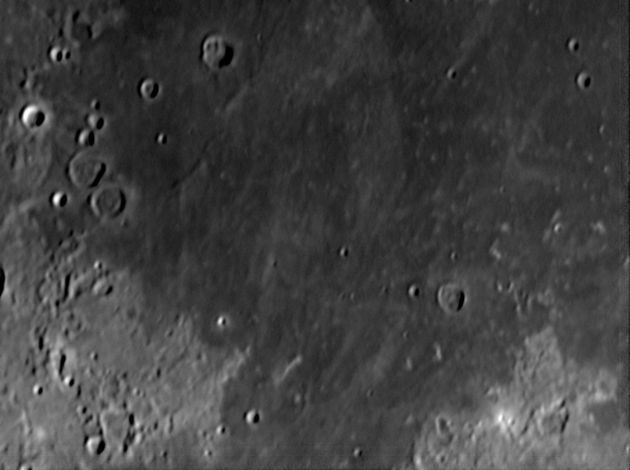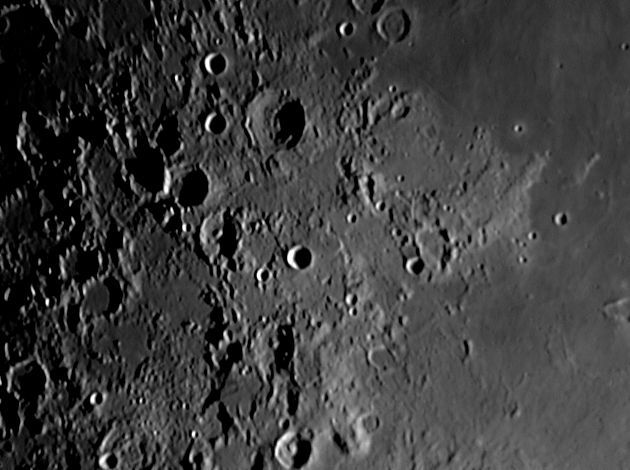

Move your mouse over the image to see just where.
Full details of the mission can be found at the web site of the
Lunar and Planetary Institute

Apollo 11 was the first manned landing on the Moon. The lunar module landed at
20:17:40 UT on 20th July 1969 in Mare Tranquillitatis at lunar coordinates 0° 4' 5" N, 23° 42' 28" E.
The commander, Neil Armstrong, was the first man to step onto the Moon with the words "That's one
small step for a man; one giant leap for mankind.". Soon afterwards Edwin (Buzz) Aldrin
joined him on the surface. Meanwhile their command-module pilot, Michael Collins, circled overhead
ready to retrieve the lunar module on its return from the surface.
Date & Time: 041002 2323 UT
Telescope: LX200 with X2 teleadaptor lens.

Apollo 11 landed in the south-west of the Mare Tranquillitatis, intentionally a very flat and,
therefore, safe area for the first landing. This wider view of the area shows a few craters
of interest. Sabine and Ritter form a pretty pair, about the same age (3,800 million years)
and size (31 and 32 Km in diameter), although Sabine is somewhat the deeper of the pair at
1500 metres (1300 for Ritter). Both have rugged floors but lack an obvious central mountain.
Nearby are the three tiny craters, renamed Armstrong, Aldrin, and Collins after the three astronauts,
originally known as Sabine E, B, and D respectively. On the other side of the landing site is
Meskelyne, a much younger crater at a mere 2,000 million years or so. In the bottom,
left-hand corner you can see the northern ends of the Descartes Highlands where Apollo 16 landed
(see the image below).
The scale
markers are approximately 50 Km north and west.
Date & Time: 041219 1746 UT
Telescope: LX200 at prime focus

This wider view includes both the Apollo 11 and the Apollo 16 landing sites. The scale
markers are approximately 100 Km north and west.
Date & Time: 050215 1950 UT
Telescope: LX200 at prime focus
Home Back to Moon